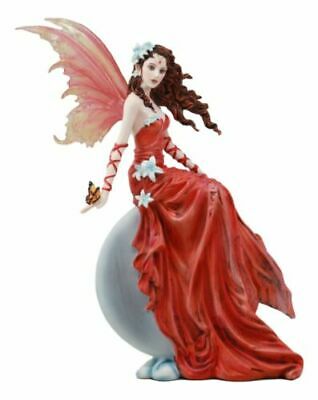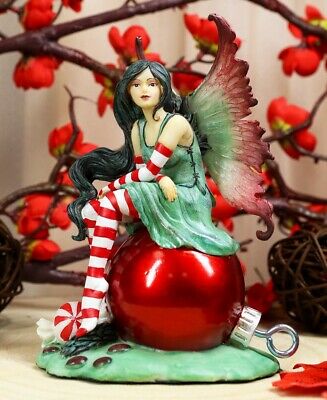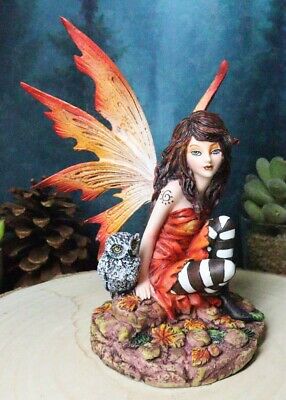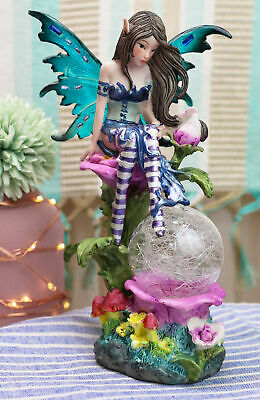-40%
NUTCRACKER Fairy Lacquer Box trinket SHELL Paper signed Russian HAND PAINTED ART
$ 51.77
- Description
- Size Guide
Description
NUTCRACKER Fairy Lacquer Box trinket SHELL Paper signed Russian HAND PAINTED ARTThis product data sheet is originally written in English.
This is a beautiful and unique Russian papier mache trinket/jewellery box portraying a NUTCRACKER
Fairy, hand painted.
The box measures 10.2 cm (4 inches) long , 8.1 cm (3 3/16 inches) wide, 1.5 cm deep.
The box is signed with the artists name S.Silantyeva (in russian letters). and depicts The Rose Flower Fairy.
This is a fabulous oil painted picture and the photo doesn't do it justice. I also have more Boxes from this Artist in my shop.
The Nutcracker
(
Russian
:
Щелкунчик
,
Балет
-
феерия
/
Shchelkunchik, Balet-feyeriya
;
French
:
Casse-Noisette, ballet-féerie
) is a two-act
ballet
, originally choreographed by
Marius Petipa
and
Lev Ivanov
with a score by
Pyotr Ilyich Tchaikovsky
. The
libretto
is adapted from
E.T.A. Hoffmann
's story
The Nutcracker and the Mouse King
. It was given its première at the
Mariinsky Theatre
in
St. Petersburg
on Sunday, 18 December 1892, on a double-bill with Tchaikovsky's opera,
Iolanta
.
Although the original production was not a success, the twenty-minute suite that Tchaikovsky extracted from the ballet was. However, the complete
Nutcracker
has enjoyed enormous popularity since the late 1960s and is now performed by countless ballet companies, primarily during the Christmas season, especially in the U.S
Major American ballet companies generate around 40 percent of their annual ticket revenues from performances of
The Nutcracker.
Tchaikovsky's score has become one of his most famous compositions, in particular the pieces featured in the suite. Among other things, the score is noted for its use of the
celesta
, an instrument that the composer had already employed in his much lesser known
symphonic ballad
The Voyevoda
.
Act I
Scene 1: The Silberhaus Home
It is Christmas Eve. Family and friends have gathered in the parlor to decorate the beautiful Christmas tree in preparation for the night's festivities. Once the tree is finished, the younger children are sent for. The children stand in awe of the tree sparkling with candles and decorations.
The festivities begin. A march is played. Presents are given out to the children. Suddenly, as the owl-topped clock strikes eight, a mysterious figure enters the room. It is Herr Drosselmeyer, a local councilman, magician, and Clara and Fritz's godfather. He is also a talented toymaker who has brought with him gifts for the children, including four lifelike dolls who dance to the delight of all. Drosselmeyer then has the precious dolls put away for safekeeping.
Clara and Fritz are sad to see the dolls taken away, but Drosselmeyer has yet another toy for them: a wooden nutcracker carved in the shape of a little man, used for cracking hazelnuts. The other children ignore it, but Clara immediately takes a liking to it. Fritz, however, purposely breaks the toy. Clara is heartbroken.
During the night, after everyone else has gone to bed, Clara returns to the parlor to check on her beloved nutcracker. As she reaches the little bed, the clock strikes midnight and she looks up to see Drosselmeyer perched atop the clock in place of the owl. Suddenly, mice begin to fill the room and the Christmas tree begins to grow to dizzying heights. The Nutcracker also grows to life-size. Clara finds herself in the midst of a battle between an army of Gingerbread man soldiers and the mice, led by the Mouse King. The mice begin to eat the gingerbread soldiers.
The Nutcracker appears to lead the gingerbread soldiers, who are joined by tin soldiers and dolls who serve as doctors to carry away the wounded. As the Mouse King advances on the still-wounded Nutcracker, Clara throws her slipper at him, distracting him long enough for the Nutcracker to stab him.
Scene 2
: A Pine Forest
The mice retreat and the Nutcracker is transformed into a handsome Prince. He leads Clara through the moonlit night to a pine forest in which the snowflakes dance around them.
Act II
Scene 1: The Land of Sweets
Clara and the Prince travel in a nutshell boat pulled by dolphins to the beautiful Land of Sweets, ruled by the Sugar Plum Fairy in the Prince's place until his return. The Prince recounts for the Sugar Plum Fairy how he had been saved by Clara from the Mouse King and had been transformed back into a Prince.
In honor of the young heroine, a celebration of sweets from around the world is produced: chocolate from Spain, coffee from Arabia, and tea from China all dance for their amusement; candy canes from Russia; Danish shepherdesses perform on their flutes; Mother Gigogne has her children emerge from under her enormous skirt to dance; a string of beautiful flowers perform a waltz. To conclude the night, the Sugar Plum Fairy and her Cavalier perform a dance.
A final waltz is performed by all the sweets, after which Clara and the Prince are crowned rulers of The Land of Sweets. Soon, however, the people of the land of the sweets begin to disappear one by one, until the Nutcracker Prince himself disappears, and Clara is found sleeping in the parlor. The Nutcracker Doll is under the Christmas tree. Clara awakes, thinking it was all a dream, but then finds her crown sitting beside her, leading to question, was it a dream? She walks to the Christmas tree and takes her Nutcracker, going back to sleep, the implication being that if it was all a dream, that she would want to keep dreaming.
The boxes most widely sought after come from one of four small Russian villages - Palekh, Fedoskino, Kholui, and Mstera. Special schools have been established at these places where artists train for four years before they become members of each village's art community. Each village also has its unique style.
<div style="text-align:center"><a style="text-decoration:none" href="https://mostpopular.sellathon.com/?id=AC124947"><img src="https://www.sellathon.com/Resources/Images/countercredit.gif" border="0"></a></div>
During the night, after everyone else has gone to bed, Clara returns to the parlor to check on her beloved nutcracker. As she reaches the little bed, the clock strikes midnight and she looks up to see Drosselmeyer perched atop the clock in place of the owl. Suddenly, mice begin to fill the room and the Christmas tree begins to grow to dizzying heights. The Nutcracker also grows to life-size. Clara finds herself in the midst of a battle between an army of Gingerbread man soldiers and the mice, led by the Mouse King. The mice begin to eat the gingerbread soldiers. A final waltz is performed by all the sweets, after which Clara and the Prince are crowned rulers of The Land of Sweets. Soon, however, the people of the land of the sweets begin to disappear one by one, until the Nutcracker Prince
Country/Region of Manufacture
Russian Federation









